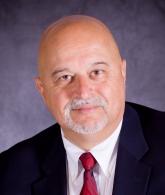New bill aims to eliminate manual lifting
A new bill proposed by Representative John Conyers (D-Mich) and Senator Al Franken (D-Minn) is drawing support and accolades from the American Nurses Association (ANA). The Nurse and Health Care Worker Protection Act, reintroduced in 2015 as H.R. 4266, would establish a national occupational safety standard that would eliminate the manual lifting of patients by registered nurses (RNs) and healthcare workers through the use of modern technology and safety controls. Additionally, healthcare employers would be required to implement a comprehensive safe patient handling and mobility program and to train their workers in proper use and practices .
"Every day, nurses and other healthcare workers suffer debilitating and often career-ending musculoskeletal disorders when they manually lift or move patients, and work in pain," said Pamela F. Cipriano, PhD, RN, NEA-BC, FAAN, President of the ANA, in an ANA statement. "Manual lifting is an unacceptable risk and practice when we have the technology and knowledge to significantly reduce injuries. This bill signals that workers are not expendable and injuries are not tolerable as just 'part of the job.' It is a much needed step in the right direction to implementing safer programs that will help to save and extend the careers of thousands of registered nurses."
And while most would agree that the bill is noble conceptually, not everyone agrees that it will do what it is intended to do.
"Not all residents are going to be receptive to having an assist device used on them," Bob Royland of the Illinois Nursing Home Administrators Association told me. "When you're working with Alzheimer’s and dementia residents, they don't adapt well to change, and it's not as easy as just explaining it to them. Many are adamant about what they want and don’t want. When they become physically resistant, then what do you do?"
His concerns are valid. In many of the facilities I visit, I identify the presence of assistive devices, but many seem to be seldom used. "It's not that we don't want to use them," one nurse told me, "it's that we don't have enough of them, and many times the residents complain of feeling scared and vulnerable when they're sitting in the sling."
Regulatory agencies may not all be on the same page on the issue, either. While everyone involved in safety management and risk management are looking for ways to maximize health and safety for workers, resident rights advocates may see things through a different set of lenses. And, as more and more initiatives focus on involving the resident in the decision-making processes on all aspects of their care, is the healthcare provider going to be stuck in between a federal mandate that says assistive devices must be used and a resident who says "don’t use those on me!"?
Consistently, I get feedback from healthcare providers reminding me that they know their residents and they know how to manage them. That is a fair and reasonable statement. At the same time, the numbers of debilitating injuries to healthcare professionals as result of lifting injuries continues to skyrocket, leading me to think that maybe we're not as smart as we think we are. One thing that is for certain: there is no easy answer.
Another concern (probably a very valid one) is the issue of more non-funded mandates coming down from the federal government. If a bill is passed that requires the use of assistive devices, administrators are going to be forced to figure out ways to purchase these devices with budgets that are already slashed to the minimum. I asked two administrators how they would find the money to do this. One simply smiled; the other made comments not suitable for print!
As a safety professional, I'm excited about anything that lessens the risk of occupational injury or illness to our workers. I support the concept of safe resident handling programs and competency-based programs that train our employees in proper lifting and transferring techniques. I’ve seen many good assessment tools used to determine if assistive devices are needed. Sadly, I’ve also heard every excuse under the sun trying to justify why the devices wasn’t or couldn’t be used.
At the same time, I must be honest and say I'm less than excited about an “all or nothing” approach. In long-term care facilities, this approach often allows more opportunity for failure than for success. And, when it comes to measuring successes and failures, worker safety should not be the barometer.
We’ll continue to monitor this situation and gather perspectives from the field. For this blog, I reached out to several people at the OSHA Communications Office in Washington, D.C., but no one seemed to want to go on record for now.
Learn more:
- Executive summary of the Nurse and Health Care Worker Act of 2015
- ANA factsheet on the Nurse and Health Care Worker Act of 2015
- Read H.R. 4266 and keep track of the bill's status here.
Stay safe and stay in touch!

Steve Wilder, CHSP, STS, is president and chief operating officer of Sorensen, Wilder & Associates (SWA), a healthcare safety and security consulting group based in Bourbonnais, Ill. SWA performs workplace safety compliance audits and security vulnerability assessments in all types of healthcare facilities. Wilder can be reached at (800) 568-2931 or swilder@swa4safety.com.
Related Articles
Topics: Advocacy , Executive Leadership , Regulatory Compliance










